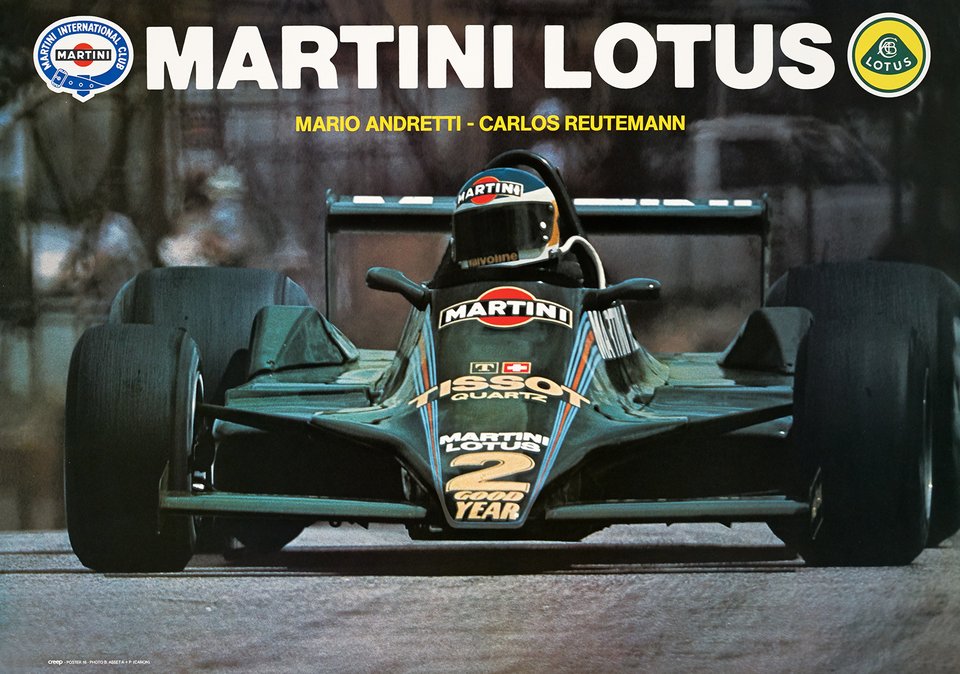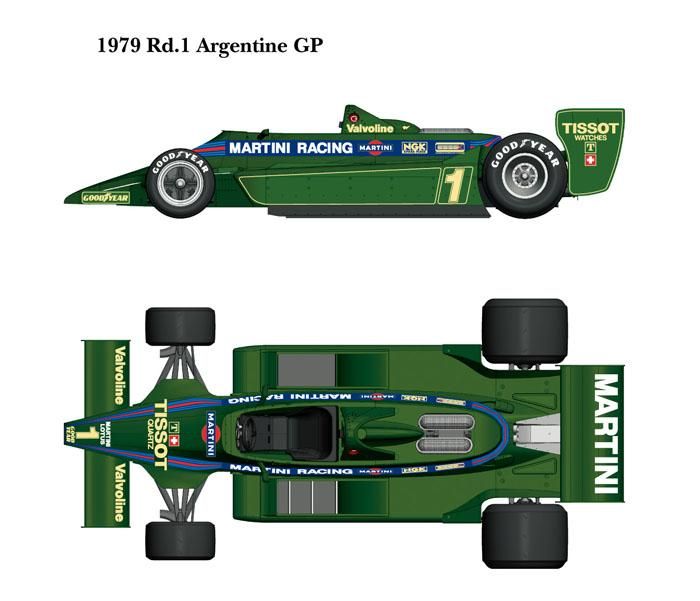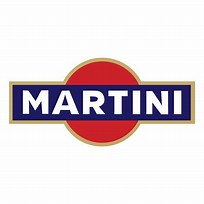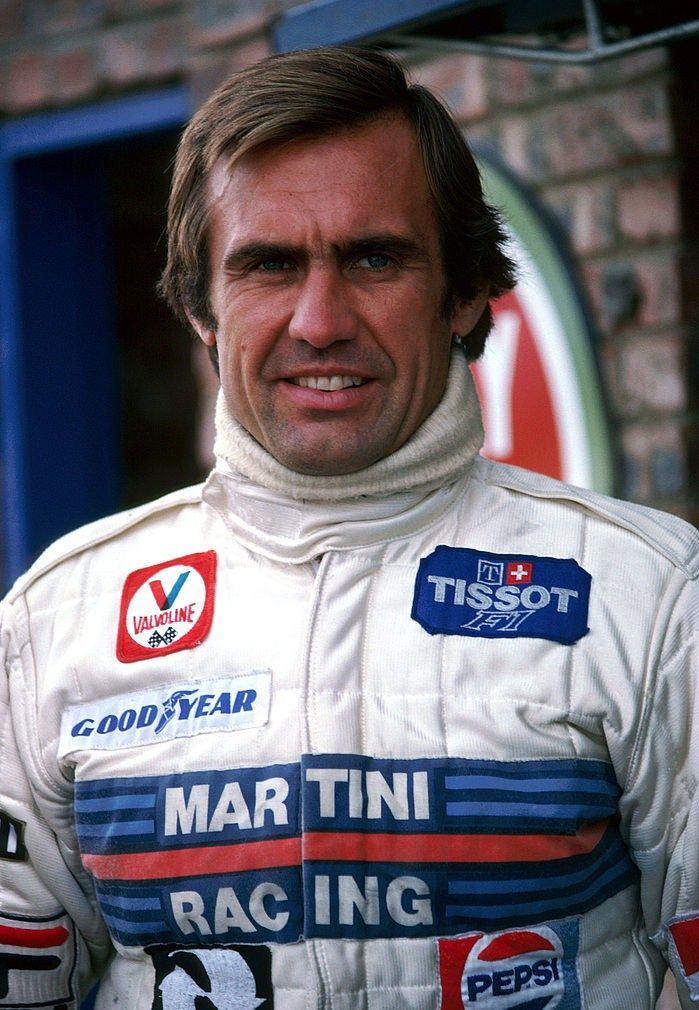Sponsor, Brands, Specialists and Suppliers: The Companies that supported the Chapman /Lotus Road & Racing Programme

Martini & Rossi: Martini Racing: Lotus in high Spirits

Figure 1: Martini Racing proportional material, image from the net
Introduction
Lotus cars sold
They were bought for their:-
- Performance –road or track
- Driving pleasure
- Reputation and image
- Aesthetics
- Symbolism
- Owner identification /personality extension etc.
All the above were integrated within a total framework design.
The above list is heavily dependent on a select group of components [either bought in proprietary or in house manufacture] that delivered the desired outcomes and met strict criteria.
Many of these components often contributed significantly to the overall aesthetic, many are extremely functional and beautiful in their own right .They formed part of a complementary whole.
In this series we examine:-
- significant Individual components from all the marque types
- Briefly explain their role /contribution /evaluation
- Analysis form and function with regard to their integration, where appropriate
- Provide suppliers/specialist advertising materials where appropriate
Understanding Lotus’s use of proprietary parts provides invaluable learning opportunities not just historical but right up to the present day. These lessons are not just applicable to automotive engineers/ designers but to the wider Industrial /Product Design professions.
The Skillful and creative adoption, absorption and integration of components was a powerful factor in the Chapman design methodology and contributed significantly to both competition and commercial success. It also feed his ability to mutate parts and materials to his desired ends.
The use of components is a fundamental skill of the Industrial Designer and the direct provision of added value.
The exact interpretation of sponsorship in conjunction with Lotus is difficult to establish objectively. The appearance of a sponsor’s logo on a car is not necessarily evidence of financial support. Access to historical archive and contracts is sought wherever possible but with the passage of time and for various reasons these are not always available or accessible to the public.
This series also embraces the specialist suppliers to Lotus. We are particularly interested in those suppliers and products that have a connectivity with aviation.
In constructing the historic sponsor series, the A&R looks only at the logos worn in period and assumes the company involved had no objection to Lotus promoting their products. The A&R sees much to be gained by the wider promotion of sponsors but in the event that a specific organization disapproves for any reason that article will be removed.
Sponsorship is an instrument of mutual benefit and promotion. Subscribers might like to see A&R articles on Sponsorship and Product Placement to understand the numerical / financial reach provided by sponsorship with its ability to identify and project status through identification.
The principle continues particularly with regard to education based exhibitions [see below for details]
Each of these articles is devoted to a company/ organization that is believed to have sponsored or supplied specialist items to Lotus.
The intention of each article is to: –
- Explain the sponsors own history and outline their products and services – past-present and future
- Explain the historical connection with Lotus and the contribution made both in competition and the production cars
- To suggest how these two interlocking facets may be translated into exciting, interpretive, educational and commercial exhibitions
Subscribers might to see complementary and structured pieces to this article: –
- Primary sponsors like Gold Leaf / John Player Specials
- Product Placement
- Separate dedicated series on engines and gearbox
- Logo on Lotus
- Lotus 79, Black Beauty etc.
Martini Rossi/Martini Racing Company Profile /Abbreviated summary
From wiki and net etc.
“The Martini & Rossi Company can be traced back to 1847 when four Turin businessmen established the Distilleria Nazionale da Spirito di Vino, to manufacture vermouth, wine flavoured with aromatic herbs. This aperitif became increasingly popular in the nineteenth century. Of the founders Carlo Re died in 1860 and Clemente Michel retired in 1863 and the firm was taken over by one of its commercial agents Alessandro Martini and the book keeper Teofilo Sola. The company was renamed Martini, Sola & Cia although the winemaking was carried out by Luigi Rossi. The resulting mixtures were very successful and sales boomed, the company beginning to export in the late 1860s. In 1879 Rossi finally bought out Sola and the firm became known as Martini & Rossi and eventually passed into the hands of the Rossi Family, Luigi having had four sons (Teofilo, Enrico, Cesare and Ernesto) who oversaw the company’s growth at the end of the century. They in turn were replaced by a new generation (grandsons of the founder) in the 1930s. By 1960, however, the firm came under the control of the General Beverage Company in Geneva and in 1992 merged its operations with Bacardi. The company has had an active involvement in motor racing since 1968 when the German distributor of Martini & Rossi sponsored a Porsche 906 sports car”
In the Chapman/Lotus era the Company was identified with:-
“Since the earliest days of the company, Martini have marketed their products aggressively, with some memorable TV advertising and sponsoring events under their MARTINI Terrazza logo.
The company has been involved in motor racing sponsorship under the Martini Racing banner since 1968, and was a minor sponsor of Scuderia Ferrari until 2008. From 2014–2018 Martini was the title sponsor of Williams F1, with the team officially called “Williams Martini Racing”, and the car in the traditional Martini racing colors.[2]”
Lotus Connections
Martini Racing is associated with the Lotus types 79/80.As we have covered the Lotus 79 fairly exhaustively we mention the Lotus type 80 that also bore Martini Racing logo.
Specification from Taylor:
| Model | Type 80 |
| Function | F1 |
| Year | 1979 |
| Volume | 2 |
| Engine | Ford Cosworth DFV |
| C.C. | 2993 |
| Carburation | Lucas fuel injection |
| Power Output bhp | 480 |
| Transmission | Lotus Hewland FGA five speed |
| Chassis | Riveted aluminium alloy and titanium monocoque |
| Body | GRP and Kelvar with foam beam reinforcement |
| carbon fibre /foam skirts | |
| Front Suspension | Fabricated titanium rockers wide lower wishbone |
| inboard c.s./d ,a.r.b | |
| Rear Suspension | Fabricated titanium rockers wide lower wishbone |
| Brakes F/R | 11×1 inch discs outboard at front ,inboard at rear |
| Wheels F/R | 13×11/13×17 |
| Tyres F/R | 10.50×13/16.20×13 |
| Length [inches] | 182-187 |
| Width [inches] | 84 |
| Height [inches] | 38 |
| Wheelbase [inches] | 108-112 |
| Track F/R [inches] | 67/66.5 |
| Weight -lbs | 1265 |

Figure 2: Image from the net

Figure 3: Logo as it appears on Lotus upper body surface
Period Address for economic geography exercise
Martini Rossi,
Corsov Emanuelell
42 Torino TO 10123
Italy
Drivers
The Archive and Resource has not featured Lotus drivers to any significant degree, but we intend to correct this.
We include a photograph of Carlos Ruetemann, who wares the Martini Racing logo on his racing overalls which further extends the publicity of the brand. Note this photograph also included in Cotton.

Figure 4: Image from the net also in Cotton
Learning Opportunities
Our learning /educational opportunities are intended to be challenging thought provoking and requiring additional research and/or analysis.
These opportunities are particularly designed for a museum/education centre location where visitors would be able to enjoy access to all the structured resources available in conjunction with any concurrent exhibition.
Understanding the potential of componentry particularly proprietary items provides some of the following learning opportunities; in this instance we suggest the following might be appropriate:-
Specific to Martini Racing
- Which other spirit/beverage brands sponsored Lotus? And in F1? Suggest motives
- Martini had a successful TV ads campaign what were they? How does TV advertising compare with F1; what are the respective costs, reach and rewards?
- Suggest what a F1 sponsor might expect as return on investment? Include direct and indirect
- Extract a selection of beverages manufacturers logos in F1 which have proved memorable and why?
- Compare Martini Racing memorabilia/merchandise with that of John Player Specials
- Using template draw in Essex logo as was accompanied some Martini Racing cars
- Compare and contrast Martini Racing logos on Porsche and Lotus why does the former seem of greater aesthetic significance?
- What is the size and value of the industry
- How has it changed? And what is its future 2020 onwards?
General
- Use a technical dictionary where needed to define components and roles
- Was there a viable alternative to the part under consideration?
- Is what might it have been /cost?
- Examine the suppliers/specialist advertising what does it convey? And what is its iconography?
- Integrate this item with our series on the economic geography of motor sports locations and manufacturing bases
- Has the component had exposure at any motor shows?
- Does the company continue to supply classic/heritage parts?
- What changes in technology and materials have impacted on Lotus through its history?
- How does component design impact on form and function
- Does the supplier/specialist have aviation links? If so what?
- What is the importance of ergonomics and how does it influence modern automobile design?
- Does excessive safety/ and or ergonomics impact negatively on aesthetics
- What is the impact of standardization of platforms through mark ranges and indeed shared with other manufacturers? Could uniformity ultimately impact on sales even if economies of scale improved?
- Enumerate Lotus bought in components
- How has mass production and proprietary parts assisted the specialist car market?
- Produce an engineering drawing of a selected component and consider the specification of the materials and assembly process, costs and volume
- Explore an enumerate supplier/specialists components used in other Industrial Design fields
- How did the supplier/specialist extract value from their sponsorship/support?
- Explore Graces Guide for further background detail
- Study the economic geography of the British auto industry what factors determined locations?
- What have been the causes of change and circumstance that have impacted on British motor industry?
- What has been the role of F1 /motor sport valley based around Bicester?
- What is the importance of outsourcing to the motor industry?
- Study a British car specialist like Morgan, TVR, Ginetta or Lotus where do they source parts? What are the advantages?
Exhibitions, Education, Economics and Entertainment
In the museum context the editors believe that commercial considerations are both necessary and complementary with its educational objectives.
For these reasons our suggested outline Business Plan includes provision for promoting products and services which share Chapman’s ideals of mechanical efficiency and sustainability. In addition we propose merchandising that explain and interprets the social and cultural context of Chapman’s designs in period. It’s suggested there will be catalogue for on line purchasing.
In this instance we suggest the following exhibition titles might be appropriate:-
Specific:-
| Martini Racing | How Chapman swallowed a Screwdriver |
| Martini Racing | Cheers for Gears |
| Martini Racing | Wine and Wings |
| Martini Racing | and Lotus go on a bender |
| Martini Racing | Stripes gone in a Flash |
| Martini Racing | Fashion and Function, when skirts got tight |
| Martini Racing | Lotus gets all tanked up |
| Martini Racing | Lifts Lotus Spirits |
| Martini Racing | Lotus mixes a Cocktail |
| Martini Racing | Black Beauty meets Black Velvet |
| Martini Racing | Lotus proves Cosmopolitan |
| Martini Racing | Has the bottle to mount spirited attack on F1 |
| Martini Racing | Lotus in high Spirits |
| Martini Racing | When a logo on a Lotus equals a sidecar |
| Martini Racing | Proof positive |
| Martini Racing | Lotus proves alcohol proof |
| Martini Racing | Lotus defies specific gravity |
General:-
- Lotus Parts: Past ,Present Future
- Lotus Parts: The Winning Factor
- The Principle Part
- Act the Part
- Assign the Part
- Lotus Components
- Lotus Components :Parts and Parcel
- Lotus Sponsors, Specialist and Suppliers:Form,Function and Forte
- Lotus Components:Parts and Partiality
- Lotus Aesthetics : With little to spare
- Lotus Cars: Spare and Slender
- Product launch with title of dedicated specific relevance
Conclusion: “The whole is greater………”
There can be little doubt about the contribution made by Martini Racing it was brief overlapping the types 79/80.
Cotton suggests of the 79:
“Development was limited during the season but over the winter there was a decision to be made: to develop the 79 according to Nigel Bennett’s design or to develop the type 80?
With John Player Specials withdrawal from the sport at the end of the 1978 season and despite linking with Martini, Chapman did not have the money to do both.
He plumped for the 80, as that was the latest development, and he was all about pushing boundaries rather than developing already successful concepts
It was a decision that didn’t pay off. The type 80 featured a complicated skirt arrangement that was never made to work properly and the car suffered from fundamental design flaw that could not be rectified….”
What is interesting in our study is that:
- That what applied to Lotus in 1978/79 still exist in F1 today and a spiral of success inducing investment and the contrary, this can risk over concentration but is a function of return on investment
- Martini Racing only sponsored Lotus briefly, it would be material to examine the contract as in was it only for a fixed time from the outset or were there conditions relating to performance?
- We can witness Chapman’s character and his preference for creative leaps which can be perhaps justified intellectual and commercially Vis return on investment
- We can also see when companies sponsor different brands, varying outcomes and associations
- Martini Racing retain an interest in motorsport
- Marketing takes many forms, as we witness manufacturers diversify we can see brands take differing approaches to advertising with different results, Martini being successful in several media. Our study of Lotus therefore is not merely restricted to engineering/motorsport but it forces us to explore wider interfaces of corporate strategy and investment expectations
Components were material to reliability and competitiveness.
The up to date analysis of Martini reveals that:
“In 1992, the Rossi family, now in its fifth generation with the company, agreed to sell Martini & Rossi to the Bacardi family. The purchase, reportedly at a price of $1.4 billion, placed the newly created Bacardi-Martini group in the top ten among the world’s alcoholic beverages groups.
While sales of Martini & Rossi’s vermouth remained strong, the brand–particularly the cocktail–had lost much of its luster. Yet the late 1990s marked a resurgence in interest in the martini, and the company moved to capitalize on the new trend by revamping its advertising to promote a more youthful, yet sophisticated, image. At the same time, the company–in part to thwart imitations from competitors–redesigned its flagship product’s bottle for the first time in more than a century, adopting a more distinctive shape. The company also began developing new packaging concepts for its sparkling wine brand as well, and in 2003 debuted a new single-serve Asti, complete with a straw. In the meantime, the rising demand for the company’s vermouth helped push its sales near the EUR 300 million mark. One hundred fifty years after Luigi Rossi developed the original recipe, Martini & Rossi remained the world’s leading vermouth brand.
Principal Competitors: Allied Domecq Netherlands BV; Diageo Plc; Seagram Company Ltd.; Fortune Brands, Inc.; Jim Beam Brands Worldwide Inc.; Brown Forman Corp.; Davide Campari Milano SpA.”
Chapman’s design and manufacturing methodology rather confirms the adage that “the whole can be greater than the sum of the parts”.
It’s an interesting an important study to consider deployment of components. It contributes to aesthetics, assembly economics and sales [attractive components/ known accepted performance and servicing ability etc.]
It is equally and mutually relevant and beneficial to the component manufacturer.
Chapman and his colleagues often took the best / most appropriate mass produced item and almost reinvented it in its service to design objectives. In this manner many components acquired a new status and indeed their aesthetic was enhanced surrounded by the Chapman conceptual whole.
It’s also extremely significant how many of these components were also used in Lotus competition cars. This created a powerful dynamic and interrelationship. Many components:-
- Performed well in competition gaining beneficial publicity and sales
- Both the component and racing reputation carried through to road cars and assisted sales
- The component manufacturer gained disproportionate publicity and assisted products sell in other applications
- All together a beneficial spiral was commenced. Publicity of the era often opted to highlight the Lotus dimension in publicity material. In fact there was a powerful synergy.
The relationship between Lotus and is sponsor specialist suppliers is significant and worthy of close study and has lessons for Engineering, Industrial Design and Manufacturing disciplines.
Along the way it’s possible too to study the wider British motor component industry and how it has helped foster the specialist car manufacturers.
Sponsorship is a worldwide phenomenon of immense commercial impotence. Both to host and sponsor organization.
With the Passage of time it’s likely to become more sophisticated and focused and the internet /multimedia technology will play greater role.
Sponsors have existed in motorsport before Chapman but he vigorously exploited the concept with Gold Leaf c 1967/68 and set a pattern for others to follow.
Sponsors of Lotus were likely to benefit financially and in terms of exposure to an extent greater than their investment. The benefits were, and remain essentially similar to present day:-
- Access to mass international audience consistent with mass production distribution marketing branding etc.
- Demographics of viewing audience and interest groups
- Additional subsidiary /secondary advertising through media, news, magazines etc.
- Identification with market /brand /marque leader in both F1 and road cars
- Association with success and continuity evolving, developing technology, materials etc.
- In period the identification with the charm ,charisma and ability to articulate that Chapman possessed
- All the attendant glamour , drama ,danger ,and spectacle of F1
- Ability to provide conducive hospitality to conduct business
- Cost effectiveness of audience cost ratio
- Possible further complex corporate benefits
Appendix 1: Context and operation of sponsorship from the net:-
- Learn how sponsorship motives have evolved.
- Be able to differentiate between advertising and sponsorship.
- Learn the advantages of each of the key promotion tools.
- Identify the six categories of sponsorship opportunities.
- Distinguish between self-evident and strategic linkages.
- Learn the trends in spending on sponsorships.
- Gain insight as to how ambush marketing and leveraging play roles.
- Develop a basic understanding of the three special cases of sponsorship.
- Identify the five key sponsorship objectives.
- Learn the importance of each sponsorship objective.
- Understand the concept of matching.
- Learn the potential components of a sponsorship plan.
- View a comprehensive example of a sponsorship.
Gain an awareness of controversies regarding sponsorship.
Appendix 2 F1 and related racing results
http://www.snowmoose.com/LotusCars/TeamLotus/TLHistory.html
Reference:
Marks of Excellence.P.Mollerup.Phaidon Press.1997.
ISBN: 0714838381
Graces Guides
Internet websites and local History
Aircraft of the Fighting Powers.Cooper&Thetford.Vol.1.Aircraft [Technical] Publications.1940.
An extensive bibliography is provided in A&R article on John Players Specials/Gold Leaf
Industrial Design A-Z.C&P Fiell.Taschen.
ISBN: 3822863106
Lotus Book.Taylor.Coterie.1998.
ISBN: 1902351002
Art of the Formula 1 Race Car. Mann, Codling.Motorbooks.2010
ISBN:
Lotus 24, 25, 28, 29, 33.Unique.
Lotus 49, 49B, 49C, 49F.Unique.
ISBN: 1842555185
International Corporate Identity.Olins.Laurence King.1995
ISBN: 1856690377
International Motor Racing 1978.Ed by B.Gill.Macdonald and Jane’s.1978
ISBN: 035409033X
The International Motor Show. Offical Catalogue.1966
Motor Racing Directory 1955-56 [Ed by staff of “Motor Racing”] Pearl Cooper.
Motor Racing Directory.Kettlewell.
ISBN: 0906556007
Autosport A-Z Motorsport Directory. [Annual editions] Haymarket
The Automobile.Reyat.Chand.2013.
ISBN: 8121902142
Fundamentals of Motor Vehicle Technology.Hillier & Pittuck.Hutchinson.1967.
Lotus 49.Wagstaff.Haynes.2014.
ISBN: 9780858334121
Lotus 72.Wagstaff.Haynes.2012.
ISBN.978857331274
Colin Chapman.Lawrence Breedon.2002.
ISBN.1859832784
Colin Chapman.Ludvigsen.Haynes.2010.
ISBN.9781844254132
Coventry Climax Racing Engine’s.Hammill.Veloce.2004.
ISBN.1903706831
Lotus, Coventry Climax and Cosworth Engine’s.Pitt.Unique.
The Anatomy and Development of the F1 Racing Car.Incandela.Haynes.1982.
ISBN.
The 1000 BHP GP cars.Bamsey.Haynes.1988.
ISBN.0854296174
Lotus 98T.Slater.Haynes.2016.
ISBN.97808573377771